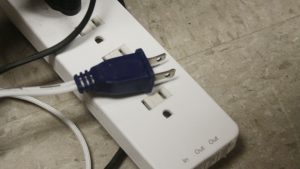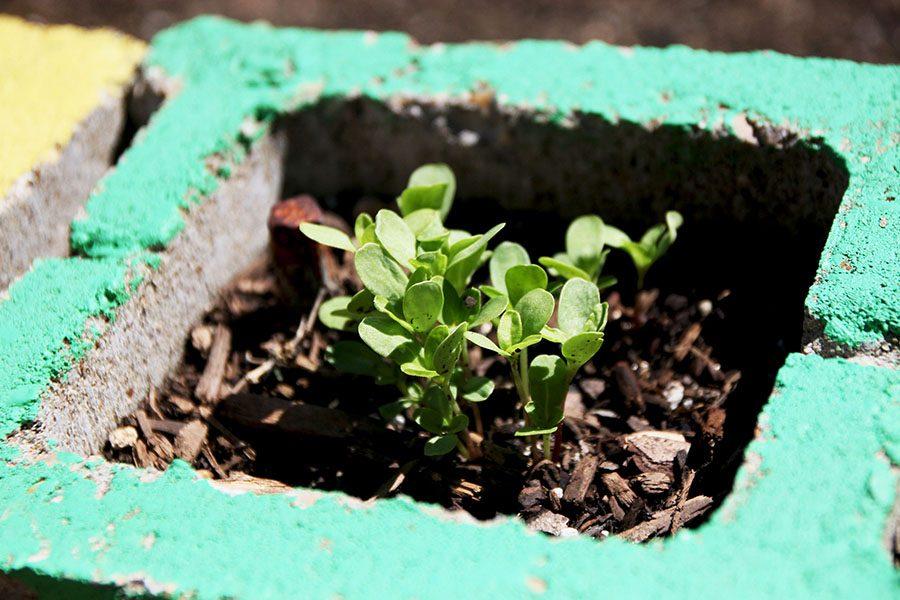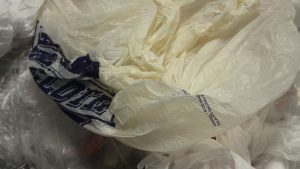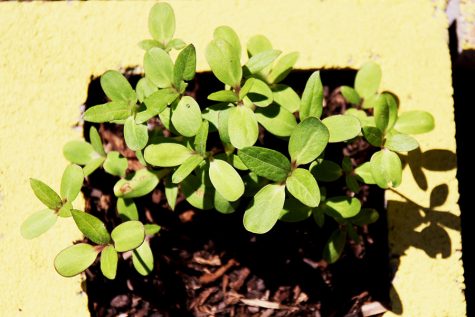Going Green
In honor of Earth Day, here are 10 easy ways to go green
ICAP students planted a garden on campus next to the main building. Planting flowers and trees is as simple way to be environmental friendly.
April 22, 2016
- Say No to Water Bottles: Although water bottles may save you time in the short run, it will cost more money in the long run. Recent studies have shown bottled water costs $7.50 per gallon, which is about 2,000 times more costly than water from your faucet. Not only that, but according to National Geographic, people purchase half a million water bottles per week, and most of those don’t end up in the recycling bin. A cheaper and greener alternative to water bottles is aluminum bottles, they’re both cheap and environmentally friendly.
- Reuse or Give Back Plastic Bags: According to the EPA, 38 billion plastic bags are thrown away in America each year. Re-use or return your plastic bags to the store when you’re done with them. This way, the same plastic bag can be used over and over again instead of being thrown away after a single use.
- Recycle: The most important (and most obvious) way to go green is to recycle paper, aluminum cans, glass, cardboard, plastic bottles, etc. Even some appliances, like computers and phones, can be recycled and re-used. The ICAP program comes to classes every day to pick up recycling, so there’s no reason not to.
- Flush Puppies: Flush Puppies are certified compostable in compost facilities that accept pet waste, where they can disintegrate and biodegrade swiftly. They’re also flushable and cheap as well ($3.99 for a pack of 15 bags), so instead of using regular plastic bags to pick up your dogs, well, poo, you can use Flush Puppies instead.
- Plant Trees and Flowers: Trees are not only pretty to look at, but they also provide you the air you live off of. Planting trees provides more oxygen and shade in your life, who doesn’t want that? Also, planting flowers is an easy way to give back to the environment and make your front yard prettier.
- Air Dry Your Clothes: In many American households, the dryer is the third-most energy-hungry appliance. By switching to air drying, you’ll be cutting energy used in your house by at least 10 percent. If you can’t bare it, then at least make sure the lint trap is clear (one of the reasons clothes don’t dry as fast), and try to cut back on the minutes you run the dryer. Usually, clothes are dry before the dryer beeps.
- Unplug or Turn Off Electronic Items: We all know that you’re not watching Grey’s Anatomy on your television when you leave your house, so turn it off and unplug it when it’s not in use. Seventy-five percent of the electricity used to power home appliances is consumed when they’re turned off. You’ll be saving the environment and some of your money by not only turning off, but unplugging appliances when not in use.

Photo by Kel Lemons
Unplugging appliances when not using them can help save electricity. - Donate Your Old Stuff: Some people have the tendency to hoard, or even throw away, old clothes and other various items. Recycle and give back by donating old items to places like Goodwill and the Salvation Army. There’s also numerous drop boxes that accept worn items and old shoes that can be recycled and turned into new items. Visit www.clothingpickuptexas.com to find nearby drop boxes.
- Make a Compost Pile: Don’t throw that banana peel in the trash, throw it in your garden. Compost piles are a cheap and effective way to make all natural fertilizer for your soil. Not only that, but making compost piles can help reduce waste that ends up in landfills.
- Use Cloth Napkins: It may seem like a small change, but switching out paper napkins for cloth napkins is a great way to get rid of waste that is unable to decompose properly. Cloth napkins can be washed and reused over and over again, and they come in tons of fun patterns.





